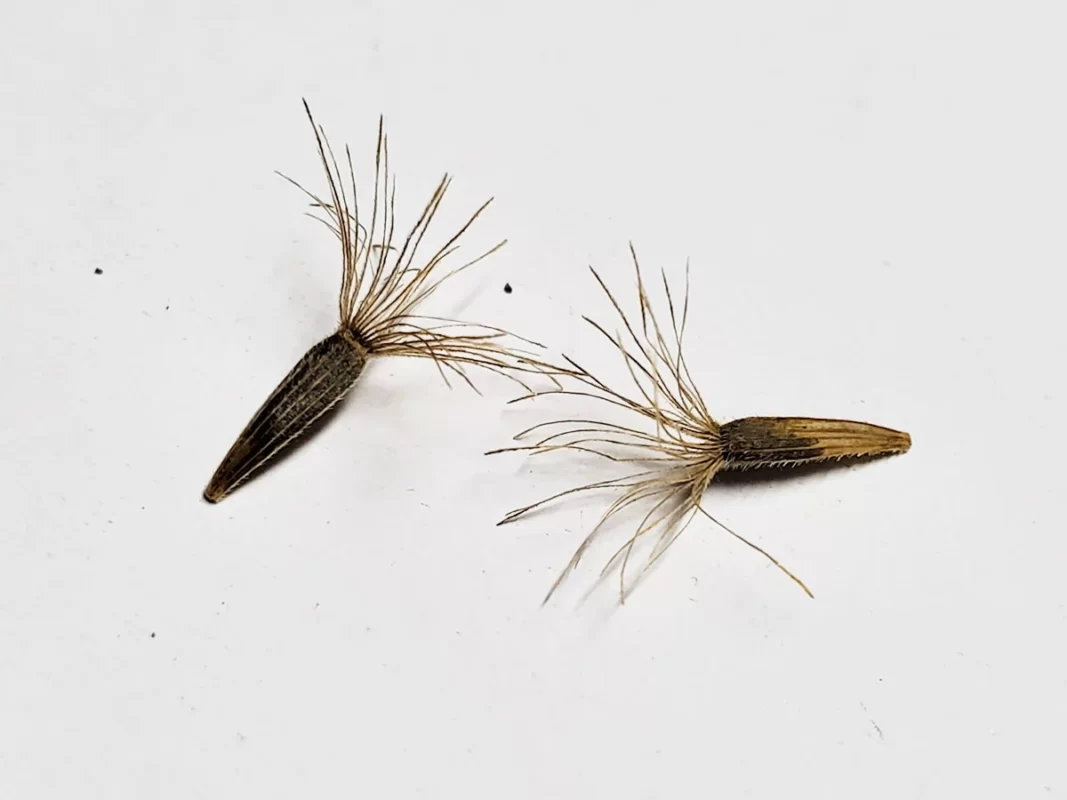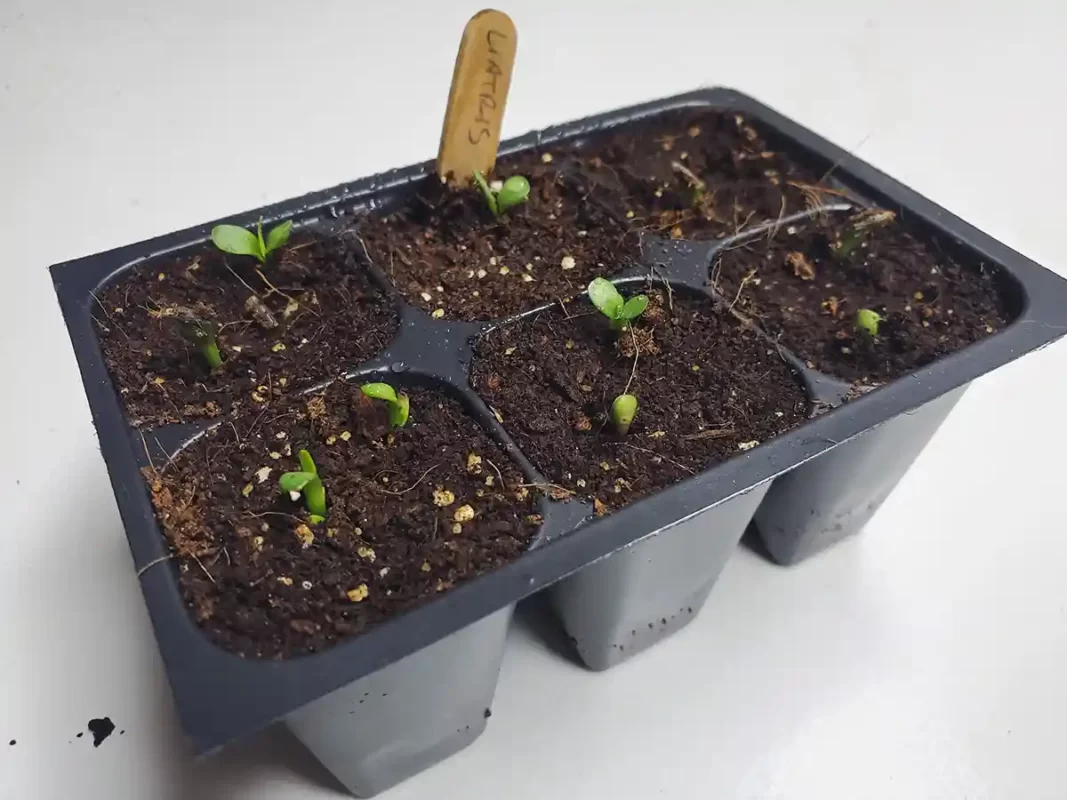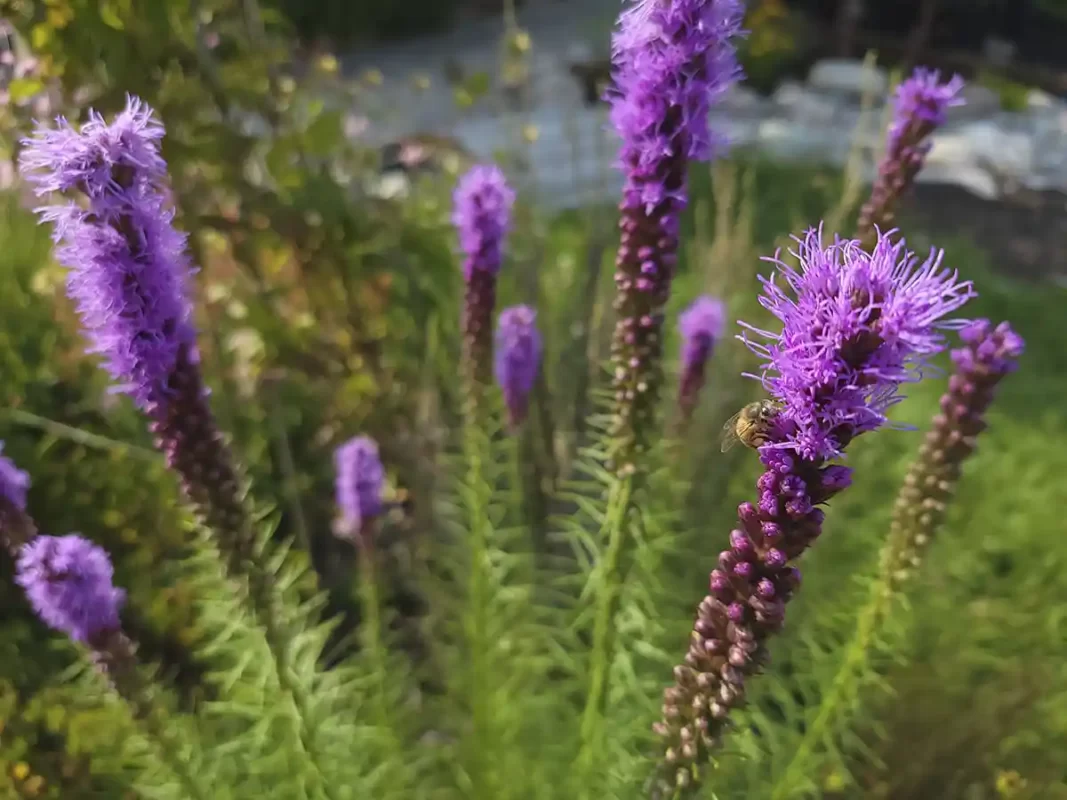Flower Gardening
How to Grow Liatris from Seed: The Flower Every Garden Needs!
In this comprehensive guide, we’ll walk you through the entire process of how to grow Liatris from seed, including collecting seeds, starting seeds indoors, direct seeding outdoors, transplanting seedlings, and caring for your plants.
Liatris, also known as blazing star or gayfeather, is a versatile, vibrant, and low-maintenance perennial plant that adds a touch of beauty and elegance to any garden. Growing Liatris from seed is not only cost-effective, but it also allows gardeners to select specific varieties and experience the entire life cycle of the plant.
Liatris Spicata Basics
| Botanical Name | Liatris spicata (most common variety) |
| Height | 2-4 feet |
| Spread | 12-18 inches |
| Germination Time | 14-21 days |
| Seed Planting Depth | 1/8 inch |
| Blooms | Late summer to early fall |
| Attracts | Bees, butterflies, and hummingbirds |
| Description | Tall, spiky flowers with feathery, purple or white blooms; grass-like foliage; suitable for borders, meadows, and cut flower gardens |
Please note that this table provides general information about Liatris, specifically the Liatris spicata variety. Other varieties may have slightly different characteristics, but this information should serve as a helpful starting point for most Liatris plants.
Common Liatris Varieties
There are several popular Liatris varieties, including Liatris spicata, Liatris ligulistylis, and Liatris aspera, each with their unique characteristics and growing requirements.
Liatris spicata, which we’ll be discussing in this article, is known for its tall spikes of purple flowers. It’s a North American prairie native but commonly growing in perennial gardens.
Collecting Liatris Seeds

When and How to Collect Seeds
The best time to collect Liatris seeds is in late summer or early autumn when the flowers have faded, and the seed heads are dry and fluffy.
To ensure that you get the most viable seeds possible it’s best to wait until the entire flower spike has turned brown.
The Liatris seeds have a feathery pappus and a conical shaped seed less than 1/16″ in diameter and about 5/16″ long. It’s easier to gather the seeds if you leave the stalk attached to the plant.
Using your forefinger and thumb encircling the stalk, begin stripping the feathery chaff off the stalk from bottom to top. Use a paper bag and let the chaff fall into the bag as you strip the seeds, there will be a lot of chaff from each flower stalk.
You may want to wear gloves when doing this to prevent cuts from the grass like leaves. Once you’ve stripped the stalks you may want to separate out the seeds for planting indoors.
You can, optionally, save seeds and chaff together if you’re planning to direct sow outdoors.
When separating the chaff, you’ll discover that many of the pappus appeared to have a seed attached but the shells are hollow containing no viable seed.
It’s easy to determine which seeds are viable because they feel solid when a fingernail is lightly pressed into them. Usually only about 25% of the seed heads contained a viable seed.
Storing Collected Seeds
To preserve the viability of your Liatris seeds, store them in a cool, dry place, ideally in a labeled, airtight container away from direct sunlight.
Proper storage will help ensure successful germination when you’re ready to grow Liatris from seed.
Grow Liatris from Seed: Indoors

Growing Liatris from seed indoors is an excellent way to get a head start on the growing season and increase your chances of success. It allows you to carefully control the environment and conditions for germination and early growth.
Follow these steps to ensure the best results when starting your Liatris seeds indoors.
Preparing Seeds for Germination
Before planting your Liatris seeds, soak them in warm water for a few hours to help soften the seed coat and promote germination.
This simple step can significantly increase your chances of success when you grow Liatris from seed.
Choosing the Right Soil and Containers
Use a well-draining, sterile seed starting mix for optimal germination and to minimize the risk of diseases such as damping-off.
A blend of peat moss, vermiculite, and perlite, provides the right balance of moisture retention and drainage for young seedlings.
Clean seed starting trays or containers with drainage holes are essential for preventing waterlogged soil and root rot.
You can use small pots, cell trays, or even repurposed yogurt cups as long as they have drainage holes at the bottom.
Be sure to sterilize any used containers with a mild bleach solution before planting to eliminate any potential pathogens.
Planting and Germination Process
Sow Liatris seeds about 1/8 inch deep, cover lightly with soil, and maintain consistent moisture and a temperature of 70-75°F to encourage germination within 14-21 days.
Placing the containers in a warm location, such as on top of a refrigerator or near a heating vent, or on a seedling heat mat can help maintain the required temperature.
Caring for Seedlings

As your Liatris seedlings grow, provide ample light and monitor soil moisture. You can use a seedling grow light or place the seedlings near a south-facing window to ensure they receive enough light.
To avoid overwatering, allow the soil surface to dry slightly between waterings.
When the Liatris seeds first sprout, you’ll notice that, like most seedlings, the cotyledons look very different.
The foliage of the mature Liatris plant is very grass like but the cotyledons are small and rounded.
It will only take about a week before you see the first slender leaves of the Liatris seedling emerging, the true leaves. The Liatris seedlings with true leaves you see in the photos are about 2-3 weeks old.
Once the seedlings are large enough you can transfer them to 4″ nursery pots with potting soil.

Transplanting Liatris Seedlings
Selecting the Right Time and Location
The ideal time to transplant Liatris seedlings is after the last frost date, in a location with well-draining soil and full sun exposure.
Liatris plants can tolerate partial shade, but they will produce more vibrant and abundant blooms in full sun.
Planting Seedlings in the Garden
To transplant your Liatris seedlings, space them 12-18 inches apart and plant them at the same depth as they were in their containers, taking care to minimize root disturbance.
Water the seedlings well after planting and continue to monitor soil moisture during their first growing season.
Grow Liatris from Seed Outdoors: Direct Sowing
If you choose to direct sow the Liatris, there’s really no need to separate the seeds from the chaff.
Simply choose your planting area and spread the chaff seed mix in your desired location and lightly cover with soil just before the first snowfall.
Caring for Liatris Plants

Watering and Fertilizing
Liatris plants require moderate watering and benefit from a balanced, slow-release fertilizer applied in spring or early summer. Water your plants deeply and consistently, allowing the soil to dry slightly between waterings to prevent root rot.
Avoid over-fertilizing, as excessive nutrients can lead to weak, leggy growth and reduced flower production.
Pruning and Deadheading
Regularly removing spent flowers and dead leaves promotes a tidy appearance and encourages more blooms throughout the season.
Deadheading also helps prevent the plant from self-seeding and spreading in your garden.
Prune Liatris plants to the ground in late fall or early spring to encourage new growth and maintain a healthy, attractive appearance.
Pest and Disease Management
While Liatris plants are relatively resistant to pests and diseases, proper care and monitoring can help prevent potential issues such as aphids, powdery mildew, and root rot.
| Pest/Disease | Symptoms | Treatment |
|---|---|---|
| Aphids | Curled, distorted leaves; small green or black insects on plant stems or leaves | Use insecticidal soap or neem oil; introduce beneficial insects like ladybugs or lacewings |
| Spider Mites | Yellow, speckled leaves; fine webbing on undersides of leaves; tiny red or yellow mites | Spray plants with water to dislodge mites; use insecticidal soap or neem oil; maintain good air circulation |
| Thrips | Discolored, distorted leaves; silver streaks on leaves; tiny insects on leaves | Use insecticidal soap or neem oil; release beneficial insects like ladybugs or lacewings; remove affected leaves |
| Powdery Mildew | White, powdery substance on leaves; distorted, stunted growth | Improve air circulation; apply a fungicide; remove affected leaves; avoid overhead watering |
| Root Rot | Yellowing, wilting leaves; black, mushy roots; poor growth | Improve soil drainage; avoid overwatering; use a well-draining soil mix; remove affected plants |
Inspect your Liatris regularly for signs of pests or diseases, and address any issues promptly with appropriate treatments or cultural practices.
Propagating Liatris
Dividing Established Clumps
In addition to growing Liatris from seed, you can propagate the plant by dividing established clumps every 3-4 years to rejuvenate the plant and increase your garden’s Liatris population.
Simply dig up the clump, carefully separate the roots into smaller sections, and replant the divisions in your garden.
Growing from Cuttings
Although less common, it is also possible to propagate Liatris from stem cuttings taken in early summer, providing an alternative method for expanding your Liatris collection.
Simply take a 4-6 inch cutting, remove the lower leaves, and plant the cutting in well-draining soil, keeping it moist until new growth appears.
Enjoying Liatris Blooms
Liatris as a Cut Flower
Liatris makes an excellent cut flower, with its long-lasting, vibrant blooms adding a stunning vertical element to bouquets and floral arrangements.
Harvest the flowers when the bottom one-third to one-half of the flower spike is open for the best vase life.
Attracting Pollinators

Liatris plants are not only visually striking but also serve as a valuable source of nectar for pollinators like bees, butterflies, and hummingbirds, thus supporting local ecosystems.
Planting Liatris in your garden can help create a welcoming environment for these important creatures, contributing to a healthy and vibrant outdoor space.
Wrapping It Up
Growing Liatris from seed can be a rewarding experience, providing you with a stunning, low-maintenance, and pollinator-friendly addition to your garden, as long as you follow the proper steps for collecting, starting, and cultivating the seeds.
With patience and perseverance, you can successfully grow Liatris from seed, creating a beautiful garden that will be the envy of your neighbors and a haven for pollinators.
We encourage you to share your experiences growing Liatris from seed in the comments section below, and let’s grow together as a community of passionate gardeners.
FAQ: Grow Liatris From Seed
How long does it take for Liatris to bloom from seed?
Liatris typically takes 2-3 years to bloom from seed, depending on the variety and growing conditions. It’s essential to be patient, as the stunning flowers are worth the wait.
Can I grow Liatris in a container?
Yes, Liatris can be grown in containers, as long as the container is deep enough to accommodate the plant’s extensive root system and has proper drainage holes to prevent waterlogging.
Do I need to stake my Liatris plants?
While Liatris plants have strong, sturdy stems, taller varieties or plants grown in windy locations may benefit from staking to provide additional support and prevent them from toppling over.
Are Liatris plants deer-resistant?
Liatris plants are considered deer-resistant, making them a suitable choice for gardeners who struggle with deer browsing on their plants. However, keep in mind that no plant is entirely deer-proof.
How long does the Liatris bloom last?
Liatris blooms generally last for 3-4 weeks, with individual flowers opening from the bottom of the spike upward, providing a long-lasting display of color in your garden.






